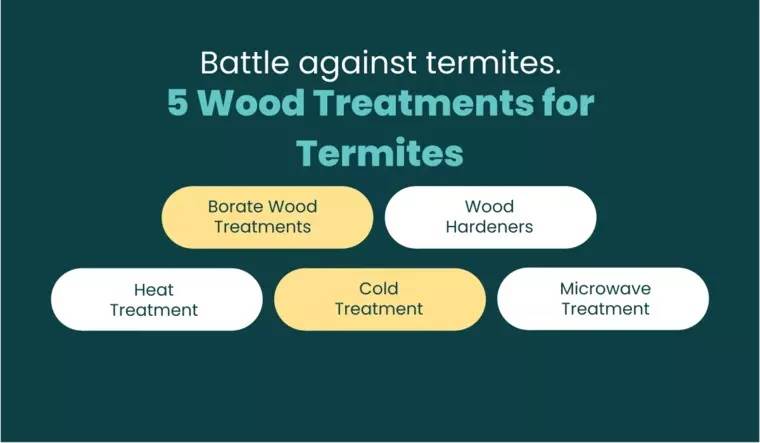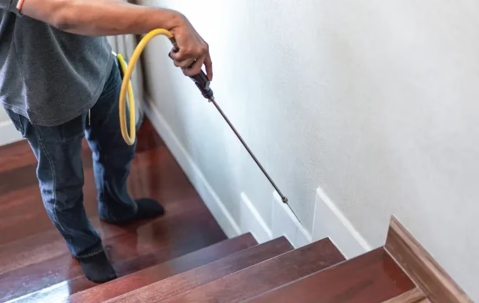What to Know About Wood Treatment for Termites in Miami, FL
Termites in Miami, FL, present a formidable challenge to homeowners, as these wood-destroying insects can cause extensive damage to properties if not detected and treated promptly.
When you think about termite extermination, tenting might be the first thing that comes to mind. But it’s not the only option. Targeted wood treatment can be an effective treatment to protect your home.
To learn more about the best strategies for keeping your wood termite-free, read on!
Key Takeaways
- In Miami, you can choose effective wood treatment methods against termites, including Borate treatments, wood hardeners, and environmentally friendly options like heat, cold, and microwave treatments.
- Whether opting for chemical treatments with termiticides and bait stations or seeking eco-friendly alternatives like nematodes, you have a solution tailored to your needs and preferences.
- Regular inspections, moisture control, and termite-resistant materials can significantly reduce the risk of termite infestations long-term.
- Recognizing the types of termites prevalent in South Florida and their signs can aid in early detection and effective treatment.
5 Wood Treatments for Termites

In the battle against termites, residents from Miami and neighboring areas like Fort Lauderdale and West Palm Beach have various effective wood treatment options for maintaining the integrity of wooden structures.
1. Borate Wood Treatments
Borate wood treatments involve borax-based solutions that seep into the wood fibers, making the wood inedible and lethal to termites.
It's most suitable for dry wood termites and can be used in pre- and post-construction phases to prevent the settlement of termite colonies.
2. Wood Hardeners
Applying wood hardeners enhances the density of soft or decayed wood, which reduces the possibility of dry wood termite infestation.
They are particularly effective in repairing termite-damaged wood, reinforcing it against further pest infestations.
3. Heat Treatment
Exposing termite-infested wood to high temperatures can exterminate the drywood termite colonies without chemicals.
It is environment-friendly and suitable for various wood types but may not be ideal for large-scale or structural applications.
4. Cold Treatment
By applying extremely low temperatures, you can achieve total and effective eradication of termites within the wood.
This method is suitable for localized infestations and works well for most wood types, although practicality may vary depending on the size of the item treated.
5. Microwave Treatment
Directing microwave energy toward affected wood heats and kills termites inside.
It's a non-chemical, spot treatment method that can work well on small areas, though it's less practical for widespread infestation.
Effective Termite Treatment Options
Miami's warm climate makes it a hotbed for termite activity, demanding robust pest management and treatment plans.
As homeowners in Miami, FL, you can choose from several termite treatment options to protect their properties.
Chemical Treatments
Chemical treatments typically involve insecticides that you can apply in various ways, including liquid termiticides and bait stations.
Treatment Method | Effectiveness | Duration | Environmental Impact |
Liquid Termiticides | High | 5+ years | Moderate-High |
Termite Baiting Stations | Moderate-High | Requires monitoring | Low |
Spot Treatment | Moderate | Varies | Low |
Fumigation and Tenting
Tent fumigation involves enveloping the building in a tent and filling it with pesticides. It's a comprehensive treatment requiring you to evacuate during the fumigation services.
Termite tenting targets active infestations effectively over a few days, eliminating termites and other pests like bed bugs.
Physical Barrier Methods
Installing physical barriers is a preventative measure rather than a spot treatment. They physically stop termites from entering the structure.
Barrier Type | Efficacy | Durability | Installation Cost |
Sand Barriers | Moderate | Long-term | Moderate |
Steel Mesh | High | Long-term | High |
Got Termites? Here’s How to Tell
Termites leave distinct traces of their activities:
- Swarmers: When winged termites swarm near light sources, it often marks the expansion of a colony.
- Termite Droppings: Drywood termites leave behind droppings resembling sawdust or coffee grounds.
- Mud Tubes: Constructed by Subterranean termites, these pencil-sized tubes of dried mud on exterior walls serve as protected pathways from the soil to the wood they infest.
- Hollow Wood: Infested wood may sound hollow when tapped, indicating that termites have consumed the interior.
- Kickout Holes: Small, round holes on the surface of infested wood where Drywood termites have ejected frass and debris.
When to Contact a Pest Control Expert
At the first hint of termite activity in Miami, FL—be it wood damage, discarded wings, or the termites themselves—it's time to call in a professional pest control company (like us, Native Pest Management)
Choosing the Right Company
Here’s a rundown of key considerations:
- Expertise: Look for pest control experts with a proven track record in termite control services.
- Cost: Obtain a free estimate before committing. Termite treatment costs can vary, and it’s helpful to compare.
- Certification: Ensure the exterminator is certified according to the State of Florida regulations.
- Local Presence: Prefer pest control services with a Miami office for an understanding of the specific challenges in your area.
